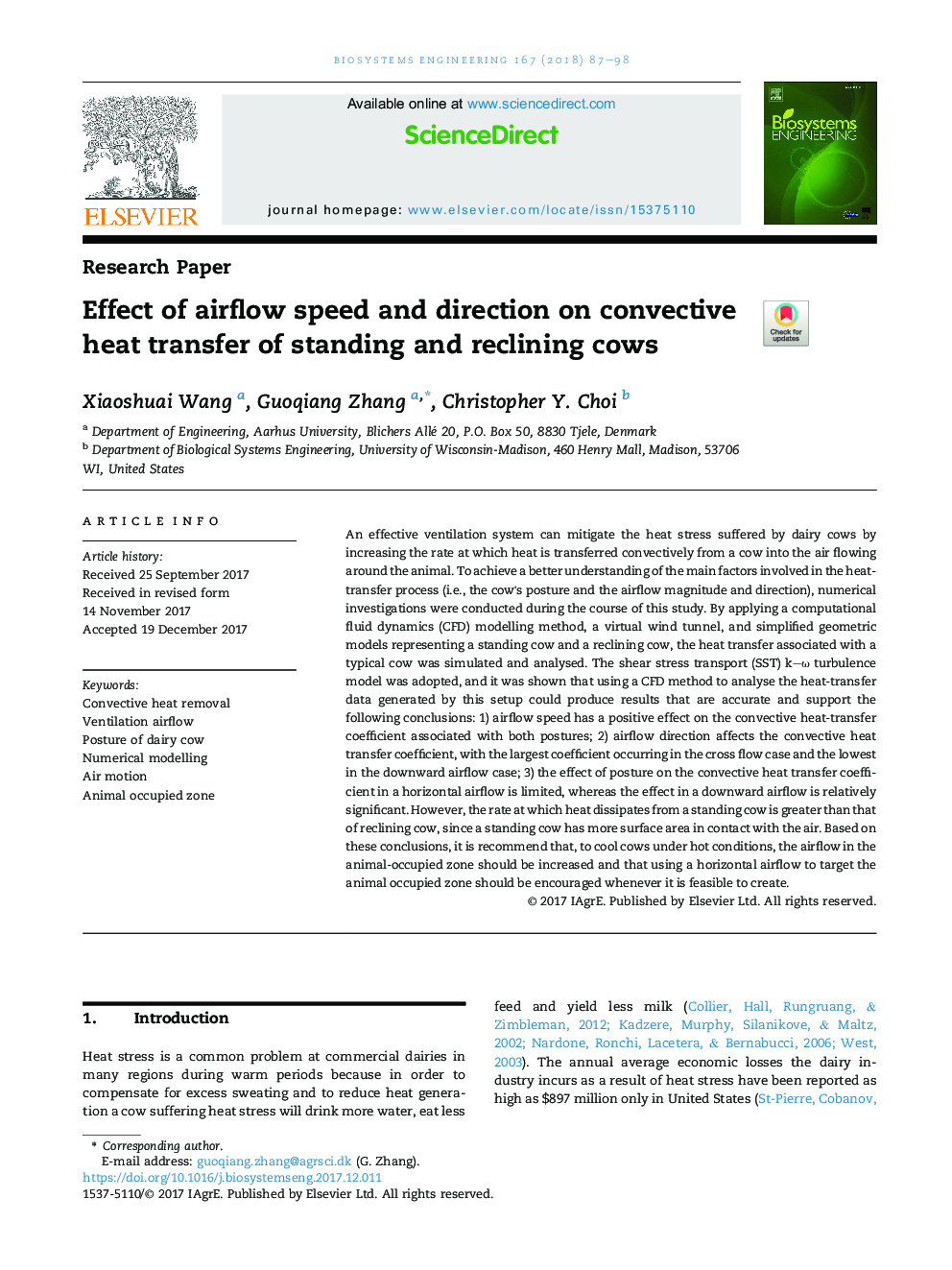| Article ID | Journal | Published Year | Pages | File Type |
|---|---|---|---|---|
| 8054801 | Biosystems Engineering | 2018 | 12 Pages |
Abstract
An effective ventilation system can mitigate the heat stress suffered by dairy cows by increasing the rate at which heat is transferred convectively from a cow into the air flowing around the animal. To achieve a better understanding of the main factors involved in the heat-transfer process (i.e., the cow's posture and the airflow magnitude and direction), numerical investigations were conducted during the course of this study. By applying a computational fluid dynamics (CFD) modelling method, a virtual wind tunnel, and simplified geometric models representing a standing cow and a reclining cow, the heat transfer associated with a typical cow was simulated and analysed. The shear stress transport (SST) k-Ï turbulence model was adopted, and it was shown that using a CFD method to analyse the heat-transfer data generated by this setup could produce results that are accurate and support the following conclusions: 1) airflow speed has a positive effect on the convective heat-transfer coefficient associated with both postures; 2) airflow direction affects the convective heat transfer coefficient, with the largest coefficient occurring in the cross flow case and the lowest in the downward airflow case; 3) the effect of posture on the convective heat transfer coefficient in a horizontal airflow is limited, whereas the effect in a downward airflow is relatively significant. However, the rate at which heat dissipates from a standing cow is greater than that of reclining cow, since a standing cow has more surface area in contact with the air. Based on these conclusions, it is recommend that, to cool cows under hot conditions, the airflow in the animal-occupied zone should be increased and that using a horizontal airflow to target the animal occupied zone should be encouraged whenever it is feasible to create.
Keywords
Related Topics
Physical Sciences and Engineering
Engineering
Control and Systems Engineering
Authors
Xiaoshuai Wang, Guoqiang Zhang, Christopher Y. Choi,
